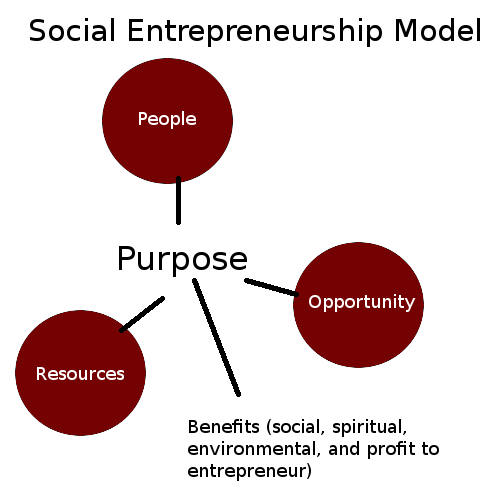
It’s been about 6 months since the Alliance released TrendsWatch 2014, so I’m going to blog a round of updates on each of this year’s six trends. In each of these posts I will recap the trend, report on its overall arc in the first half of this year, recommend a recent article (or video, or maybe even a book) exploring the topic, and list one source (blog, Twitter account, etc.) you can follow for related news and commentary.
Haven’t read the report yet? You can download a free PDF of TrendsWatch 2014 (as well as past issues of the report) from the CFM TrendsWatch page. You can download a free app from iTunes (the report looks great on an iPad, and the app version includes embedded videos.) If you want a print copy to mark up and pass around, you can buy it from the AAM Bookstore for $12.95 (significant discounts available for bulk orders, in case you want to use the report with your staff, board or museum studies class).
For Profit For Good: the rise of the social entrepreneurs
A rising number of for-profit businesses are tackling traditionally nonprofit goals. “Social entrepreneurship” is the growing realm of mission-driven business enterprises that view financial success as a way to create more and better good. As TrendsWatch asks, “What if it turns out that for-profit organizations can do a better job than the ‘independent sector’ at solving the world’s problems?
Overall Arc of the Trend
Accelerating, with some bumps. One thing to watch about this trend is whether “impact investing” (investing in for profit companies that have a mission to achieve social good) pulls money from traditional philanthropy. We are looking at real money here, as this kind of investment-for-good is projected to “grow to into a $1 trillion part of the financial market by 2020.” Judith Rodin, president of the Rockefeller Foundation, recently co-authored an e-book called “The Power of Impact Investing” that explores how ordinary folks (not just the 1%) can be social impact investors, reaping a modest financial return by supporting social change. On the other hand, the “hybrid” organizations such as low-profit limited liability corporations (L3Cs) and Benefit Corporations, that are springing up at the intersection between for profit and nonprofit organizations focused on social missions seem to be off to a rocky start. These new legal structures have been hailed as a way to combine some of the advantages of both sectors, and attracting support from both philanthropy and investors, however they seem to be spreading only slowly, and some people are raising questions about whether rules governing these entities really enforce transparency and accountability. (Then again, I could raise the same doubts about the often nominal oversight of traditional nonprofits.) Here is a good article from Nonprofit Quarterly reviewing some of these concerns.
Recommended Read
One great article I came across since the publication of TrendsWatch on the theme of “for profit for good” is this piece in Hawaii Business: “Impact Investing is the New Philanthropy.” (I explored some of the implications of this piece in this Monday Musing blog post.) The article describes the work of the Ulupono Initiative founded by Pierre and Pan Omidyar, and describes how these two philanthropists view the intertwined economies of impact investing (to foster for profit enterprises that address social and environmental needs) and charitable giving (to nurture nonprofits that will, in the long run, become self-sustaining). I highly recommend this medium-length piece.
To Add to your Scanning Feed
The Ecopreneurist: “a blog for and about eco and social entrepreneurs, startups, cleantech, web 2.0 and disruptive business ideas.” Features an eclectic mix of posts that range from ethical fashion to clean energy to socially responsible business practices. (This, for example, is where I read about the guilt-inducing Oroeco app that can calculate the carbon footprint of almost any aspect of your behavior. No pressure.)









